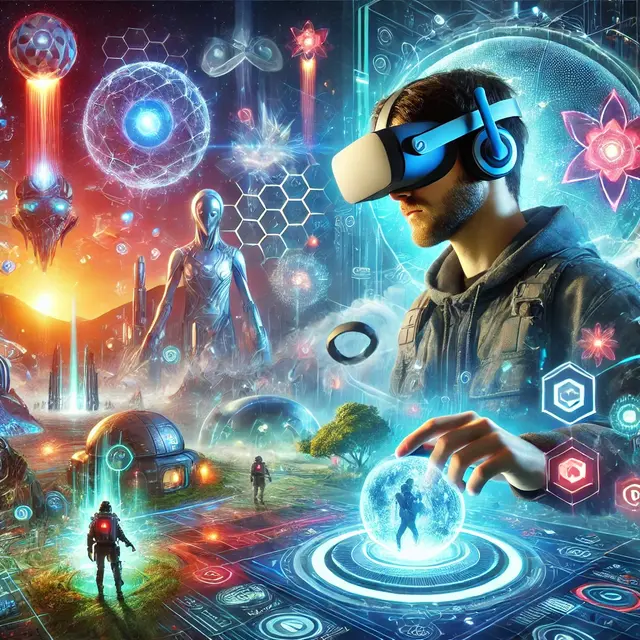
The Power of XR in Gaming
XR gaming transforms the way players interact with games. Virtual Reality places players in entirely new dimensions, where they can explore hyper-realistic environments, fight enemies, or solve puzzles with full immersion. Augmented Reality overlays game elements onto the real world, turning everyday surroundings into a battlefield, treasure hunt, or strategic playground. Mixed Reality takes this even further, allowing players to interact with virtual elements as if they were tangible objects within their physical space.
This technology creates a heightened sense of presence, making players feel as though they are truly part of the game. Whether it’s wielding a sword in a medieval fantasy world or strategizing with lifelike NPCs, XR offers an unmatched level of engagement.
Innovative Features of XR Gaming
- Immersive Worlds: XR technology brings game environments to life with stunning realism. From futuristic cities to mythical landscapes, players can explore every detail in 360 degrees.
- Physical Interaction: Motion tracking and haptic feedback allow players to use their bodies to interact with the game world. Whether swinging a bat, firing a weapon, or solving a puzzle, every movement feels natural and intuitive.
- Social Connectivity: Multiplayer XR games enable players to team up with friends or compete against others in shared virtual spaces, fostering a sense of community and collaboration.
- Personalized Experiences: XR adapts to the player’s preferences and environment, offering tailored gameplay that feels unique to each individual.
The Impact of XR Technology on Game Design
For developers, XR technology opens up a world of creative possibilities. Game designers can craft experiences that blend storytelling, exploration, and interaction in ways that were previously unimaginable. AI integration further enhances these experiences, allowing for dynamic environments and intelligent NPCs that adapt to the player’s actions.
XR is also pushing the boundaries of traditional genres. Adventure games become full-fledged expeditions, sports games feel like real-life matches, and puzzle games challenge players in three-dimensional spaces. The versatility of XR ensures that it can revolutionize every type of game, from casual mobile apps to large-scale AAA titles.
Real-World Applications Beyond Entertainment
While XR gaming is primarily focused on entertainment, its applications extend beyond leisure. Educational games use XR to teach complex concepts through interactive simulations. Training programs in industries like healthcare, aviation, and military are adopting XR-based gamification to create realistic, risk-free learning environments. This blend of gaming and practical applications demonstrates the far-reaching potential of XR technology.
Challenges and the Road Ahead
Despite its incredible potential, XR gaming faces challenges that need to be addressed for widespread adoption. The cost of XR hardware, such as VR headsets and motion controllers, remains a barrier for many players. Additionally, developers must overcome technical hurdles like motion sickness, optimizing graphics performance, and ensuring compatibility across devices.
However, advancements in technology are making XR more accessible. With innovations like wireless headsets, lightweight AR glasses, and cloud-powered gaming, the future of XR is brighter than ever. As the industry continues to grow, it’s only a matter of time before XR gaming becomes a mainstream phenomenon.
